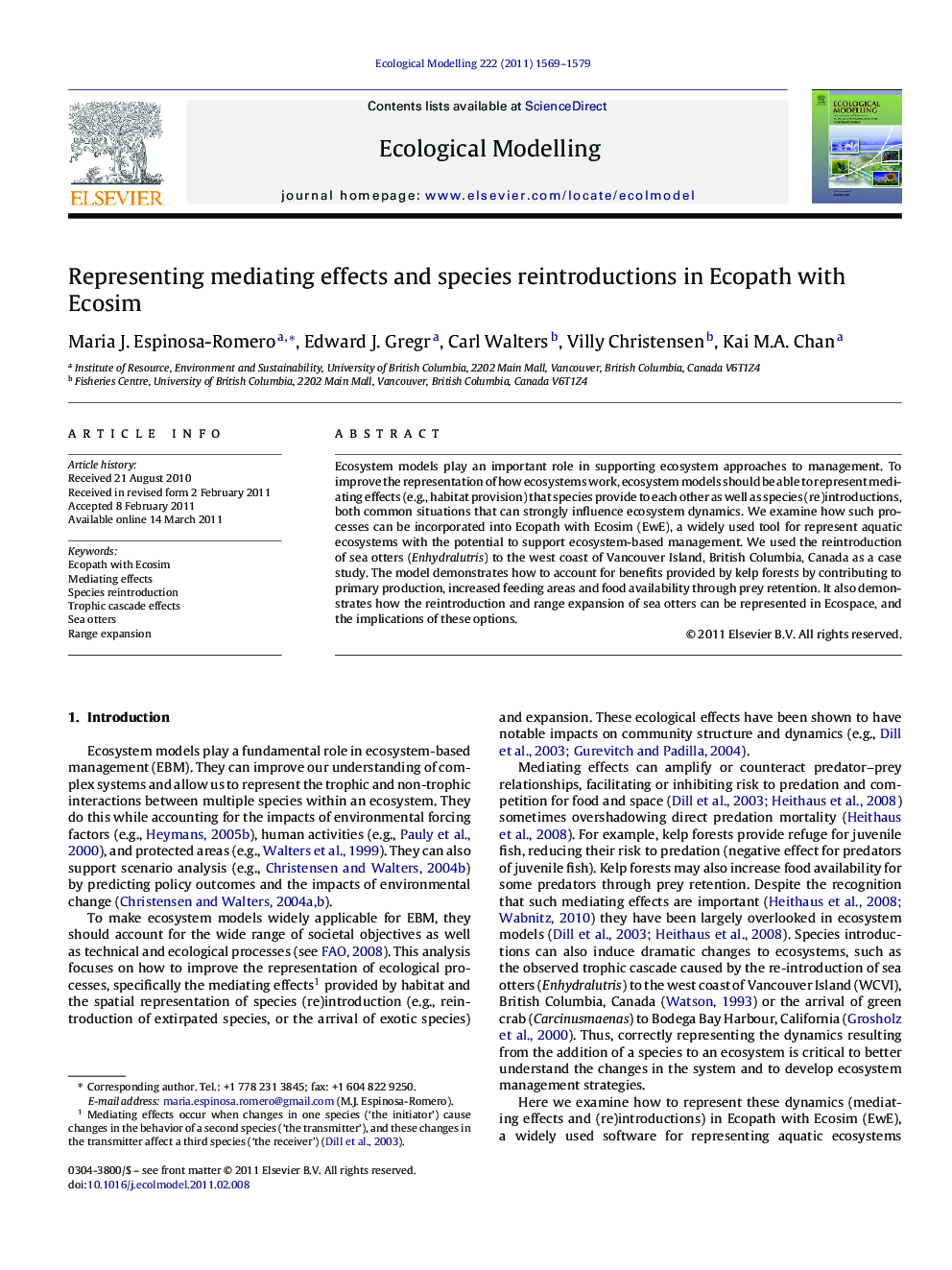| Article ID | Journal | Published Year | Pages | File Type |
|---|---|---|---|---|
| 4376765 | Ecological Modelling | 2011 | 11 Pages |
Ecosystem models play an important role in supporting ecosystem approaches to management. To improve the representation of how ecosystems work, ecosystem models should be able to represent mediating effects (e.g., habitat provision) that species provide to each other as well as species (re)introductions, both common situations that can strongly influence ecosystem dynamics. We examine how such processes can be incorporated into Ecopath with Ecosim (EwE), a widely used tool for represent aquatic ecosystems with the potential to support ecosystem-based management. We used the reintroduction of sea otters (Enhydralutris) to the west coast of Vancouver Island, British Columbia, Canada as a case study. The model demonstrates how to account for benefits provided by kelp forests by contributing to primary production, increased feeding areas and food availability through prey retention. It also demonstrates how the reintroduction and range expansion of sea otters can be represented in Ecospace, and the implications of these options.
Research highlights► This work focuses in two ecological dynamics: mediating effects and species reintroduction. ► The mediation function of Ecosim can represent the mediating effects occurring in a system. ► Ecospace does not have a function to represent species reintroductions. ► In Ecospace, species biomasses are distributed across all cells in the initial state, which is at odds with reintroductions. ► The diffusion model showed a uniform expansion of sea otters while the Individual-based model a random expansion.
